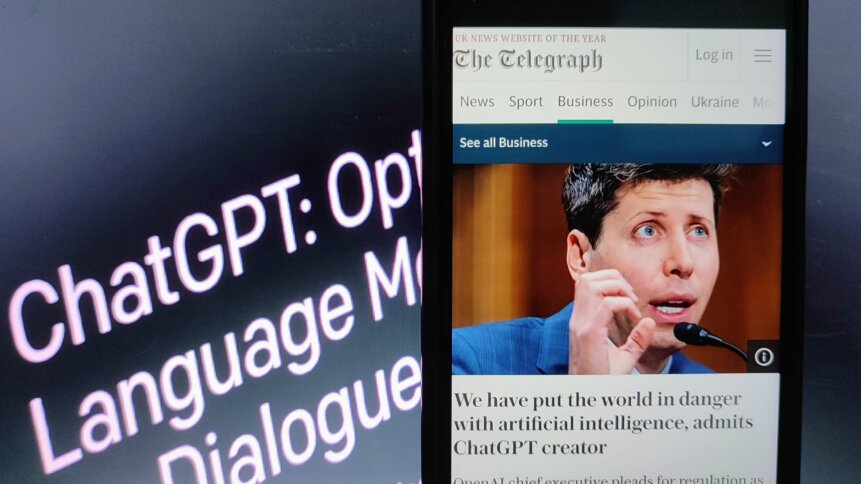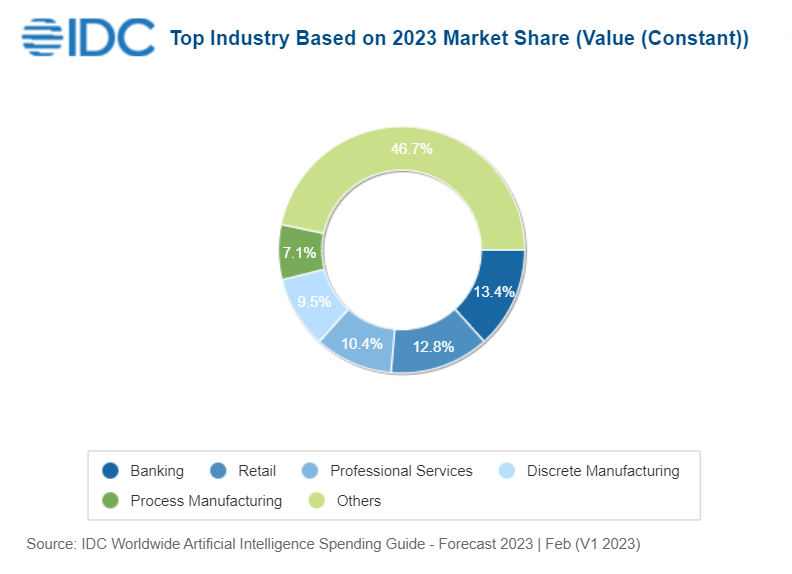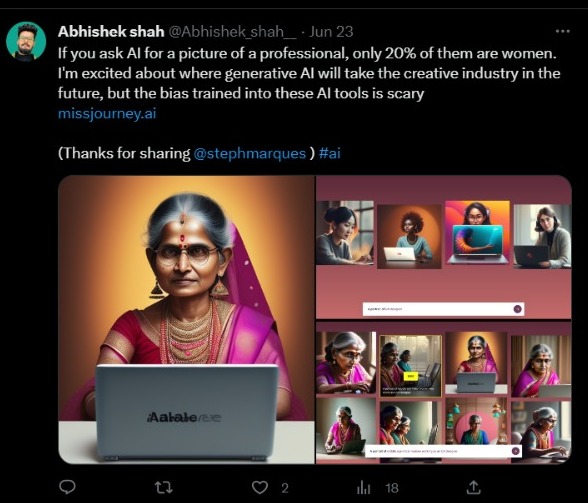Some disadvantages of AI that are worth looking into

• AI has advantages and disadvantages, wherever it’s used.
• It’s not the eco-friendly panacea some people believe.
• What we make of AI is in our own hands.
As artificial intelligence (AI) grows more sophisticated and widespread, the voices warning against AI’s disadvantages and potential dangers are growing louder. The conversation on the perils of technology, however, is not recent. Even Stephen Hawking, one of the leading scientists of the 20th and 21st centuries, warned that AI “could spell the end of the human race” as early as 2014.
AI can make a big difference in our lives – for better or worse – and the stakes are high. Ever since generative AI exploded into the public consciousness with the launch of ChatGPT at the end of last year, calls to regulate the technology to stop it from causing undue harm have risen to a fever pitch worldwide.
And the scramble to govern AI is precisely what governments worldwide are doing, with the European Union making the fastest progress (largely because it was already considering regulation on some technologies, and was able to fold generative AI into the mix).
Earlier this month, the European Parliament adopted its negotiating position on the AI Act – the world’s first set of comprehensive rules to manage AI risks.
On the other hand, technology leaders have also signed an open public letter saying that if government officials get it wrong, the consequence could be the extinction of the human race. Before we get into the disadvantages of AI, it is essential first to understand what the technology is, and what it does.
In its simplest form, AI is a machine’s ability to perform the cognitive functions we usually associate with human minds. “Humans and machines: a match made in productivity heaven,” McKinsey aptly stated in a report. Over the years, humans started viewing the possibility of sentient machines with fascination – and fear.
Over the last two decades, intelligent machines have become a regular part of our lives. Then AI became an issue when those intelligent machines got faster and more complex and started acquiring skills and perceptions that had previously been the sole purview of humans.
“Today, AI is a machine’s ability to perform the cognitive functions we associate with human minds, such as perceiving, reasoning, learning, interacting with an environment, problem-solving, and even exercising creativity. You’ve probably interacted with AI even if you didn’t realize it—voice assistants like Siri and Alexa are founded on AI technology, as are some customer service chatbots that pop up to help you navigate websites,” McKinsey added in its report.
A forecast released by technology research firm IDC indicated that global spending on AI, including software, hardware, and services for AI-centric systems, will hit more than US$154 billion by the end of this year, an increase of 26.9% on the amount spent in 2022. That means the world will witness a rise in AI-related applications as more businesses explore this technology’s possibilities.

IDC Worldwide Spending on AI-Centric Systems Forecast to Reach US$154 Billion in 2023. Source: IDC
But as the saying goes, ‘With great power comes great responsibility.’ AI is proving to be a double-edged sword. Although McKinsey Global Institute research suggests that by 2030, AI could deliver an additional global economic output of US$13 trillion per year, the same technology also gives rise to unwanted and sometimes severe consequences.
Among the disadvantages of AI
Loss of jobs
As with any booming technology, AI has the potential for peril too. As it grows more capable, its advantages will inevitably be tempered with worries that these complex, opaque systems may do more societal harm than economic good.
Most AI naysayers also point out the elephant in the room: “What impact will the AI revolution have on our jobs?” While AI is currently less capable than people, there is no denying that, alongside the other potential disadvantages of the technology, people are also worried about losing their jobs to it.
The BBC calls it “AI Anxiety” in a report highlighting how the rapid growth in generative AI tools, such as OpenAI’s ChatGPT, and the overall progression of the “AI arms race” is creating uncertainty for employees.
Even in its latest report on The Future of Jobs, the World Economic Forum (WEF) predicts the creation of 69 million jobs by 2027 thanks to AI – and the destruction of 89 million jobs. But outside of job losses, which some experts see as revolutionizing the labor market, other disadvantages to AI should be spoken about at length.
More AI hacking
We know how it is with bad actors – as technology becomes ever more sophisticated, they will find new ways of exploiting vulnerabilities and gaining access to confidential information. But in recent years, hackers have been upping their ante – with the help of AI.
Among the various methods, generative AI is being used to automate the process of launching cyberattacks, making it easier for hackers to identify and exploit vulnerabilities in their targets. This could include using AI to develop malware that can evade traditional security measures, or AI-driven bots to launch distributed denial of service (DDoS) attacks.
Several high-profile data breaches have already occurred in which AI was used to expose vulnerable systems. In 2017, the WannaCry ransomware attack used AI to spread quickly across the globe, infecting over 230,000 computers in over 150 countries.
Hackers used machine learning algorithms to quickly identify and exploit vulnerable systems, allowing them to spread the ransomware and demand payment quickly.
The SolarWinds hack in 2020 is one of the most recent examples of how AI-empowered hackers can target routine software updates.
Fighting & causing climate change
The famous adage “with great power comes great responsibility” holds true when it comes to AI, as its immense potential necessitates careful consideration of its usage. From predicting extreme weather events to optimizing renewable energy systems, AI is revolutionizing our approach to environmental sustainability.
A study by the accounting firm PwC revealed that by 2030, AI could reduce global greenhouse gas emissions by up to 4%. A separate 2022 BCG Climate AI Survey report found that 87% of private and public sector chief executive officers (CEOs) with decision-making power in AI and climate believe AI is essential in the fight against climate change.
However, training large algorithms, such as deep learning models, involves processing vast amounts of data through complex mathematical calculations. These calculations require high-performance computing resources, including powerful processors and specialized hardware like graphics processing units (GPUs).
As a result, training these models can consume significant energy, substantially impacting the environment.
Data from the Massachusetts Institute of Technology found that the energy consumption associated with training a large algorithm can emit as much as 284,000 kg of carbon dioxide. Furthermore, the study found that training algorithms’ energy consumption and carbon footprint will likely increase as the demand for AI applications grows.
That means AI is not a panacea for mitigating climate change’s effects, and there must be active measures to minimize the ecological footprint of AI development and deployment.
Biased AI
Due to the limited view of the world attainable through the lens of any single person or group, bias becomes an unavoidable feature of life. The issue is that when AI reflects and amplifies preferences, AI algorithms will yield biased results if they were developed with a bias, or if the data used as training sets for the algorithms were biased.
In a New York Times article, Olga Russakovsky, an Assistant Professor of Computer Science at Princeton University shared three root causes of bias in AI systems. “The first one is biased in the data. People are starting to research methods to spot and mitigate bias in data. For categories like race and gender, the solution is to sample better, such that you get a better representation in the data sets.”
The second root cause of bias, Russakovsky explained, is in the algorithms themselves, because they can amplify the bias in the data. “So you have to be thoughtful about how you build these systems,” she said, adding that the third cause would be human bias.

Addressing racial and gender bias in generative AI.
Source: Twitter
“We’re a fairly homogeneous population, so thinking broadly about world issues is challenging. There are a lot of opportunities to diversify this pool, and as diversity grows, the AI systems themselves will become less biased,” Olga concluded.
That being said, tackling bias in AI requires individuals, organizations, and government bodies to look at the root of the problem, which is often the people creating the AI services in the first place.
As in all the best science fiction, AI is neither a demon nor an angel. It’s a mirror of its creators – the human race. So AI will undoubtedly have enormous benefits and significant disadvantages.
The trick will be spotting and eliminating those disadvantages as much as possible.










